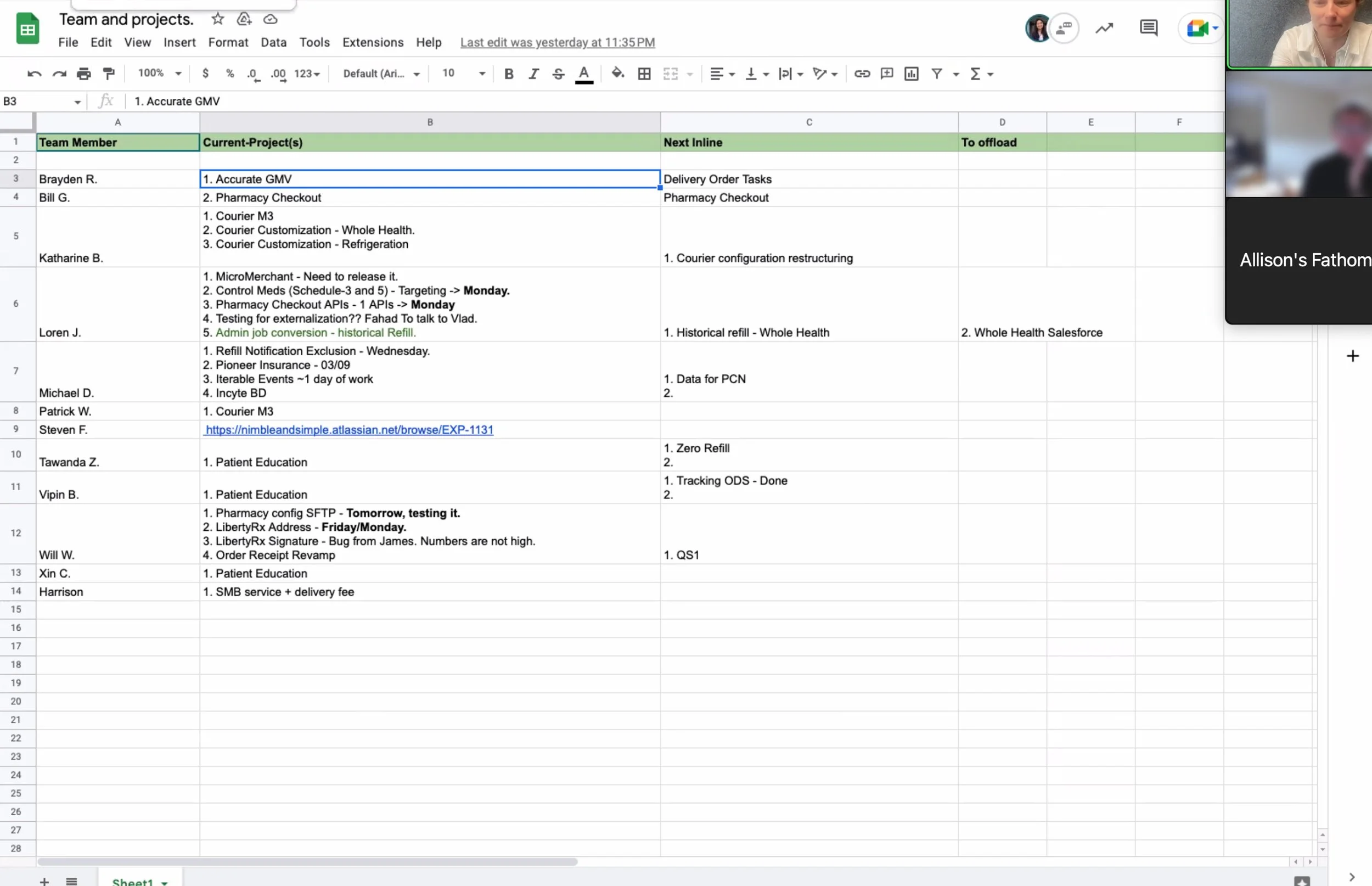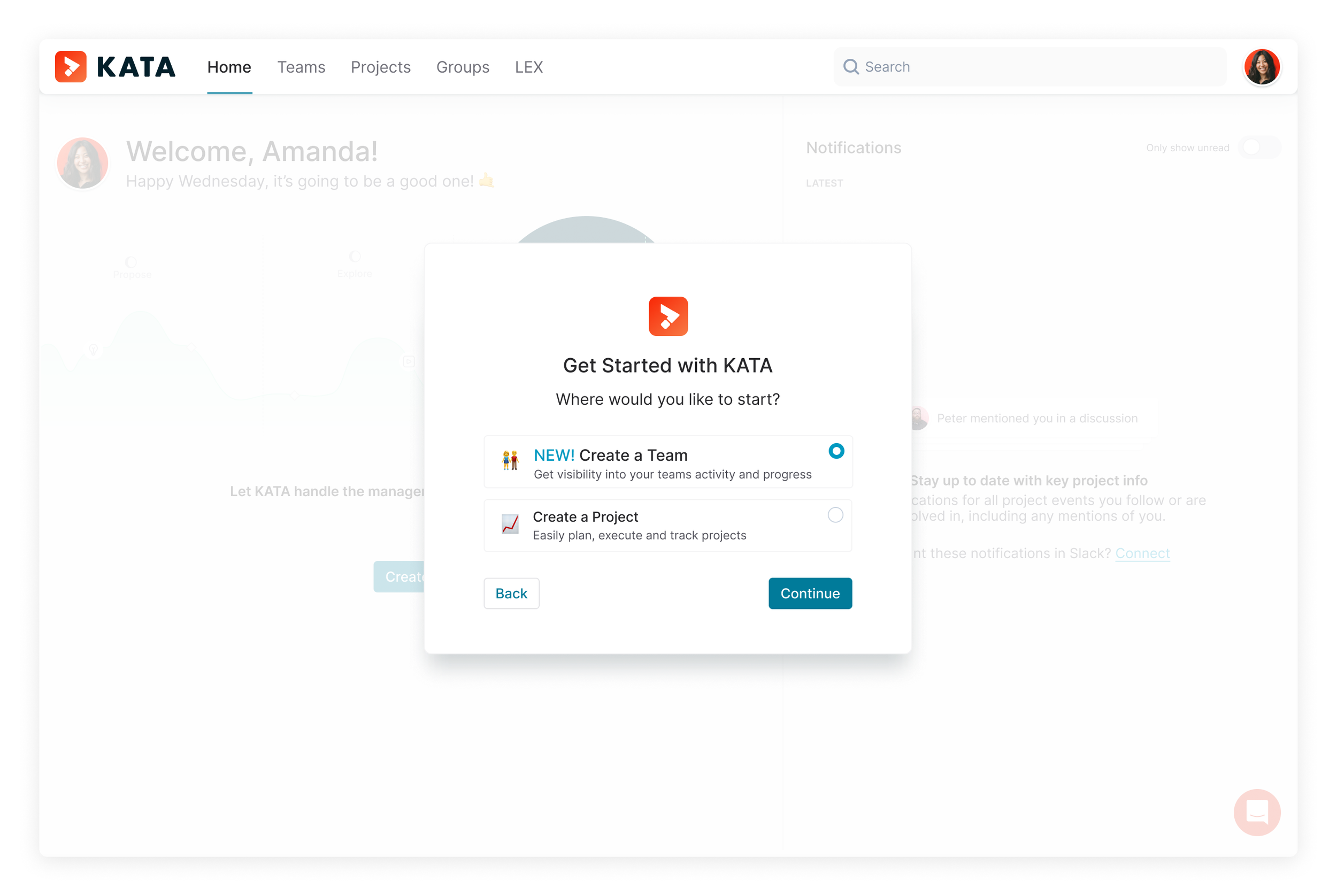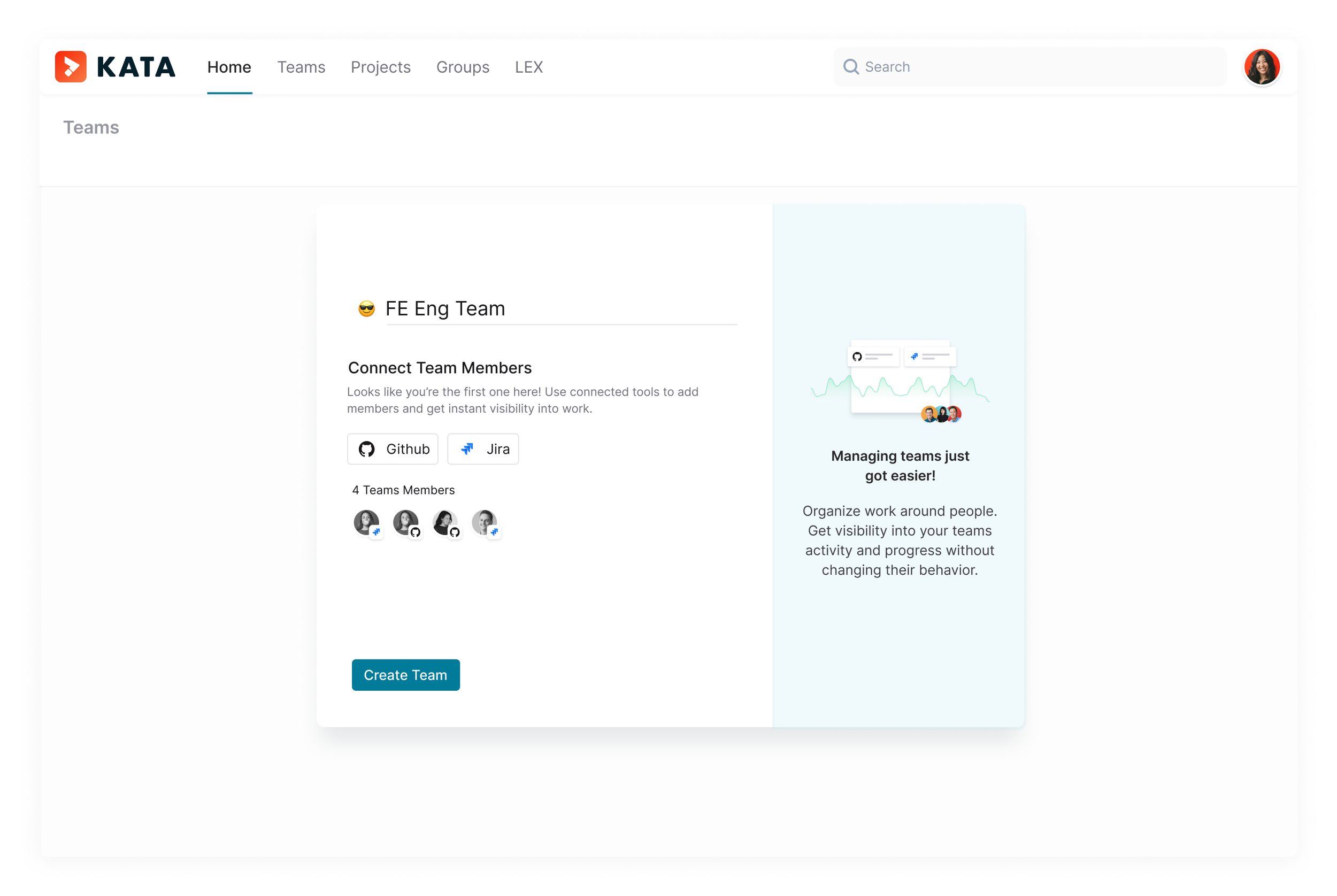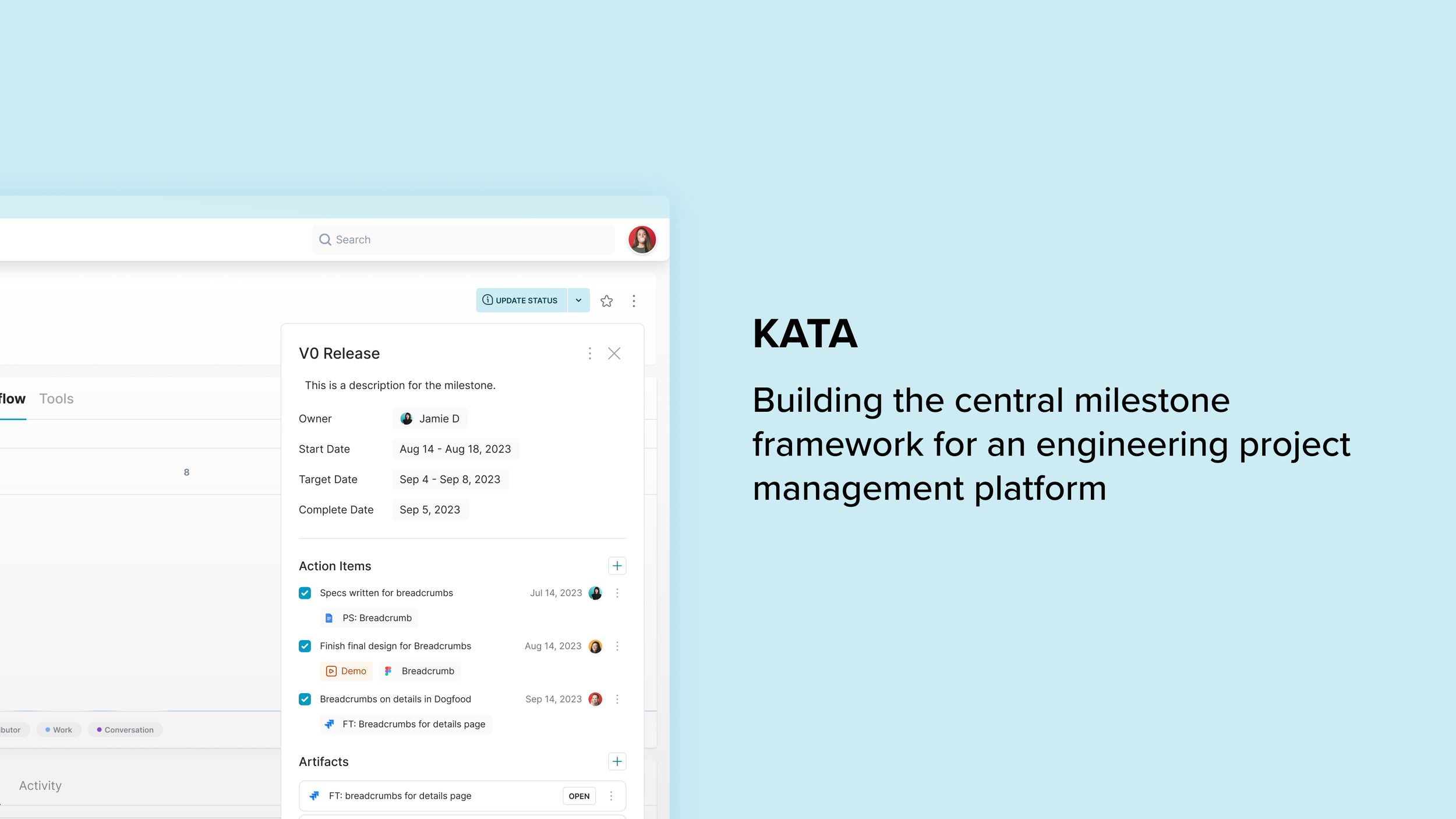2024
Unlocking Business Growth Through KATA Teams
Designing a team management tool to aid in customer acquisition and expand KATA’s reach post-Beta. KATA Teams serves as a free entry point, generating interest, increasing platform adoption, and strengthening the sales pipeline by showcasing KATA’s value to a broader audience.
COMPANY
Kata
ROLE
Product Designer
TEAM
Rick Boykin, Paul Spheers, Anna Stearns, Peter Lapin
PROJECT DETAILS
Engineering teams are bogged down by fragmented information, excessive meetings, and redundant reporting, pulling them away from their core focus—building products. Instead of seamless collaboration, developers are forced to navigate multiple tools, provide constant status updates, and manage administrative overhead, leading to inefficiencies, misaligned priorities, and communication gaps.
KATA initially addressed work management at the project and initiative level through Projects and Groups, but lacked a way to organize and streamline work at the team level. While this structure captured high-level organizational workflows, it didn’t reflect how companies naturally operate—around teams. This missing layer left a critical gap in our product.
Following our Beta release, while we successfully signed contracts, the number of seats per customer remained low. To bridge this gap, KATA Teams was introduced as a free entry point to showcase our product’s unique value, differentiate it from traditional project management tools, and engage a broader set of users—not just project owners. By helping teams streamline their communication workflows effortlessly, KATA Teams serves as both a valuable standalone tool and a gateway to deeper adoption of the KATA platform.
Expanding our reach with Teams
GOAL
What Teams needed to achieve
In order for KATA teams to serve as a valuable standalone tool and gateway to deeper adoption, we needed to address the following:
View into what the entire team focus in their respective tools
Leverage existing LLM to create daily and team status updates
Ability to get see team member progress within tools without initial account creation in Kata
Upsell moments for both Kata Projects and Groups
RESEARCH
Understanding current customer workflows
We had just three months to design, develop, and launch KATA Teams before the holiday season. Given this tight timeline, we prioritized rapid insights from existing customers to understand how they track team progress.
We discovered that most teams rely on spreadsheets alongside their ticketing systems, manually updating them throughout the week and reviewing them in status meetings. These insights revealed two key pain points:
Manual updates are time-consuming and divert focus from actual work.
Status meetings are inefficient, often spent tracking down information rather than discussing progress, risks, and next steps.
SOLUTION
From design to development
Collaborating with Product, Engineering, and Go-to-Market, we defined a three-part solution:
Seamless Onboarding – Allow users to get started quickly without requiring their entire team to be on the platform.
Team Dashboard – Provide instant visibility into what the team is working on.
Platform Discovery – Showcase KATA’s full capabilities (Projects, Groups, and Primitives) while encouraging broader team adoption.
The onboarding experience was designed to be fast and effortless. Connect your team and their tools in minutes for instant visibility into daily priorities.
The Overview Tab serves as your team’s central hub, making it easy for team members, stakeholders, and adjacent teams to find documentation, communication channels, and projects in one place.
The Daily Update uses KATA’s LLM to generate status updates by pulling data from work tools and KATA primitives (Action Items, Milestones, and Projects) making updates quick, not a time-consuming task.
The Focus Tab provides real-time visibility into each team member’s daily priorities by eliminating guesswork, tracking down status, and unnecessary update meetings.
LAUNCH AND OUTCOME
Go-to-Market on Product Hunt
Our Product Hunt launch delivered strong results:
Ranked Top 10 Products of the Day
Generated buzz and engagement across Product Hunt and other channels
Strengthened the sales pipeline, leading to increased M1s with prospective customers












